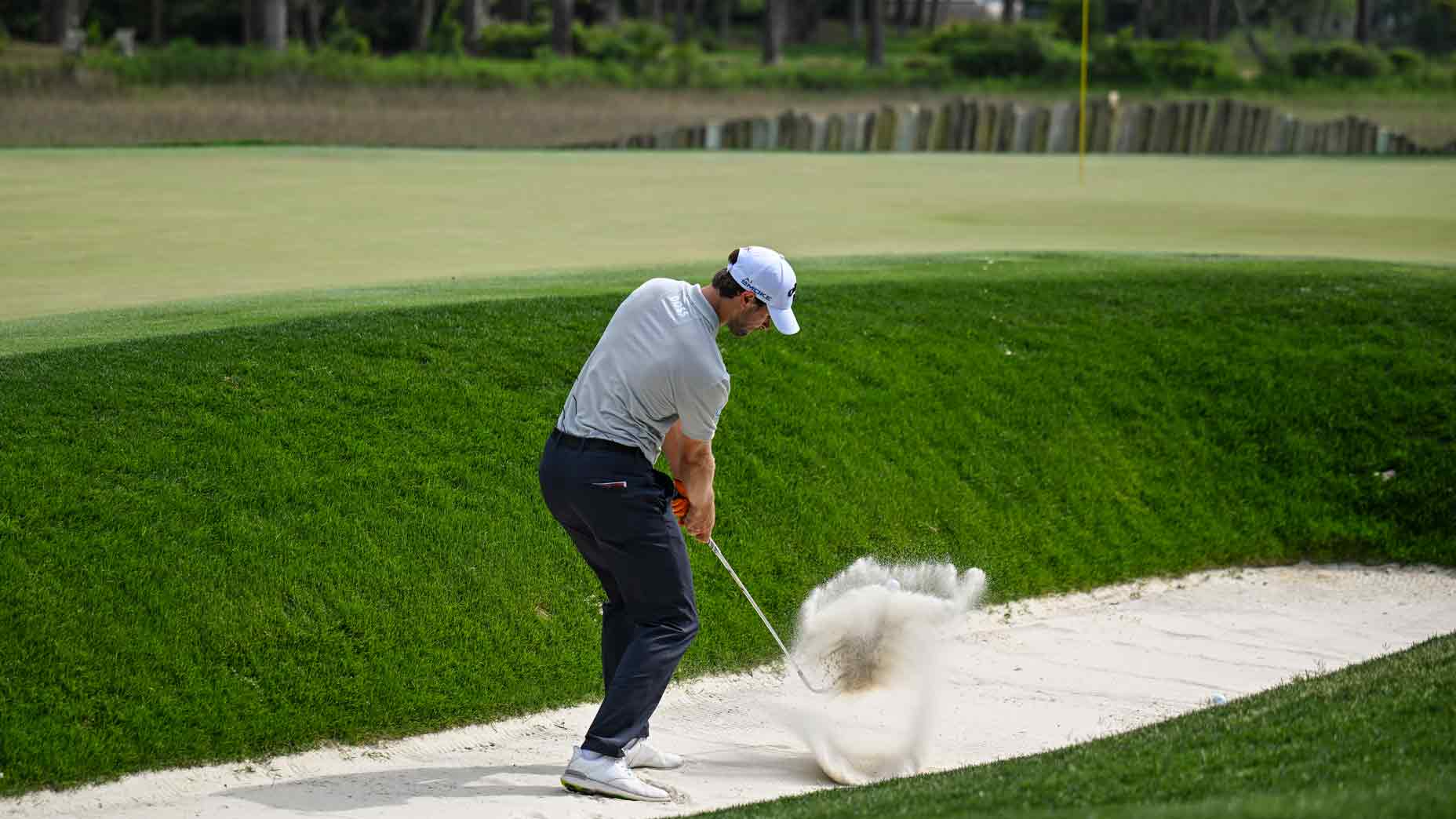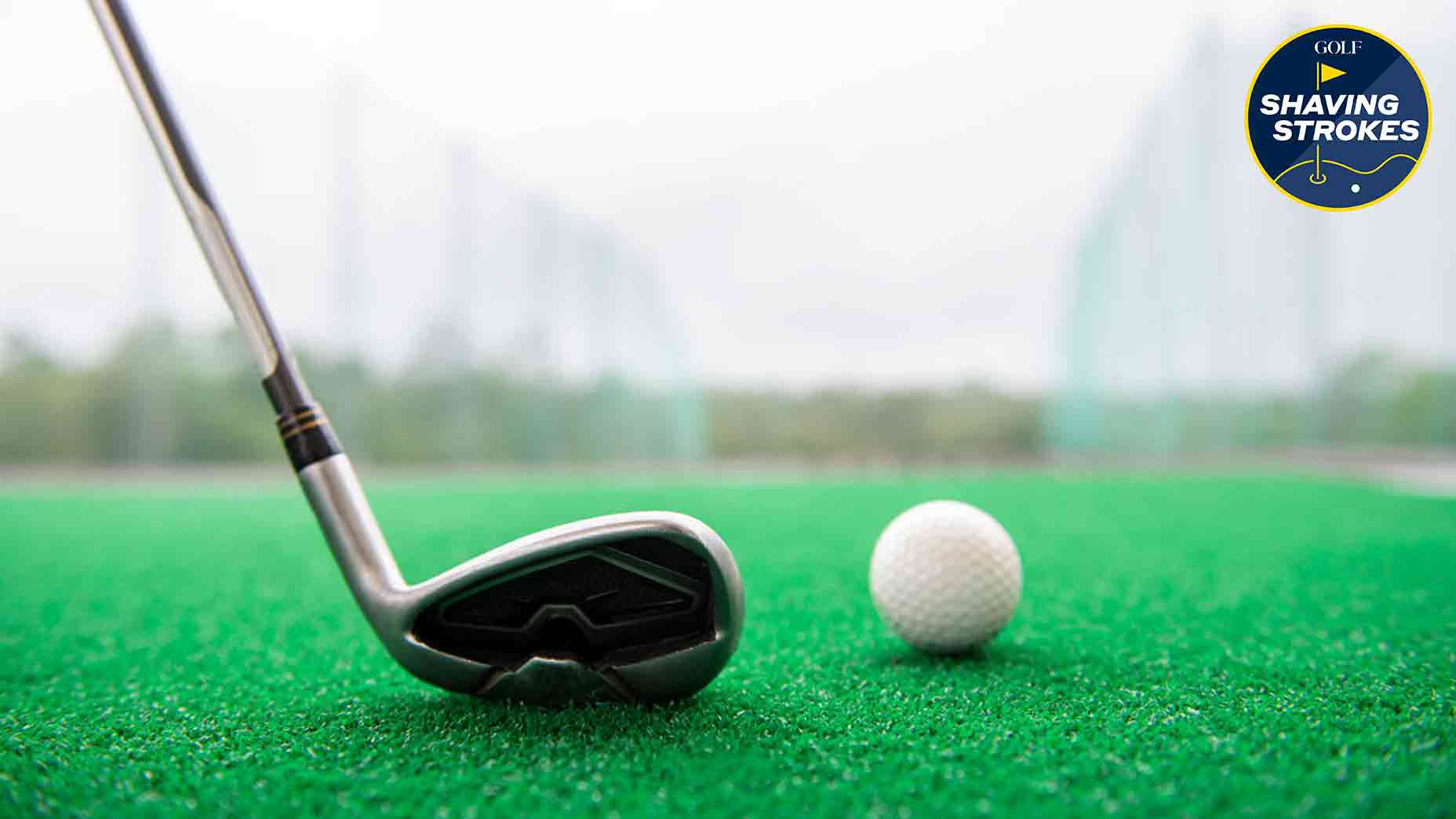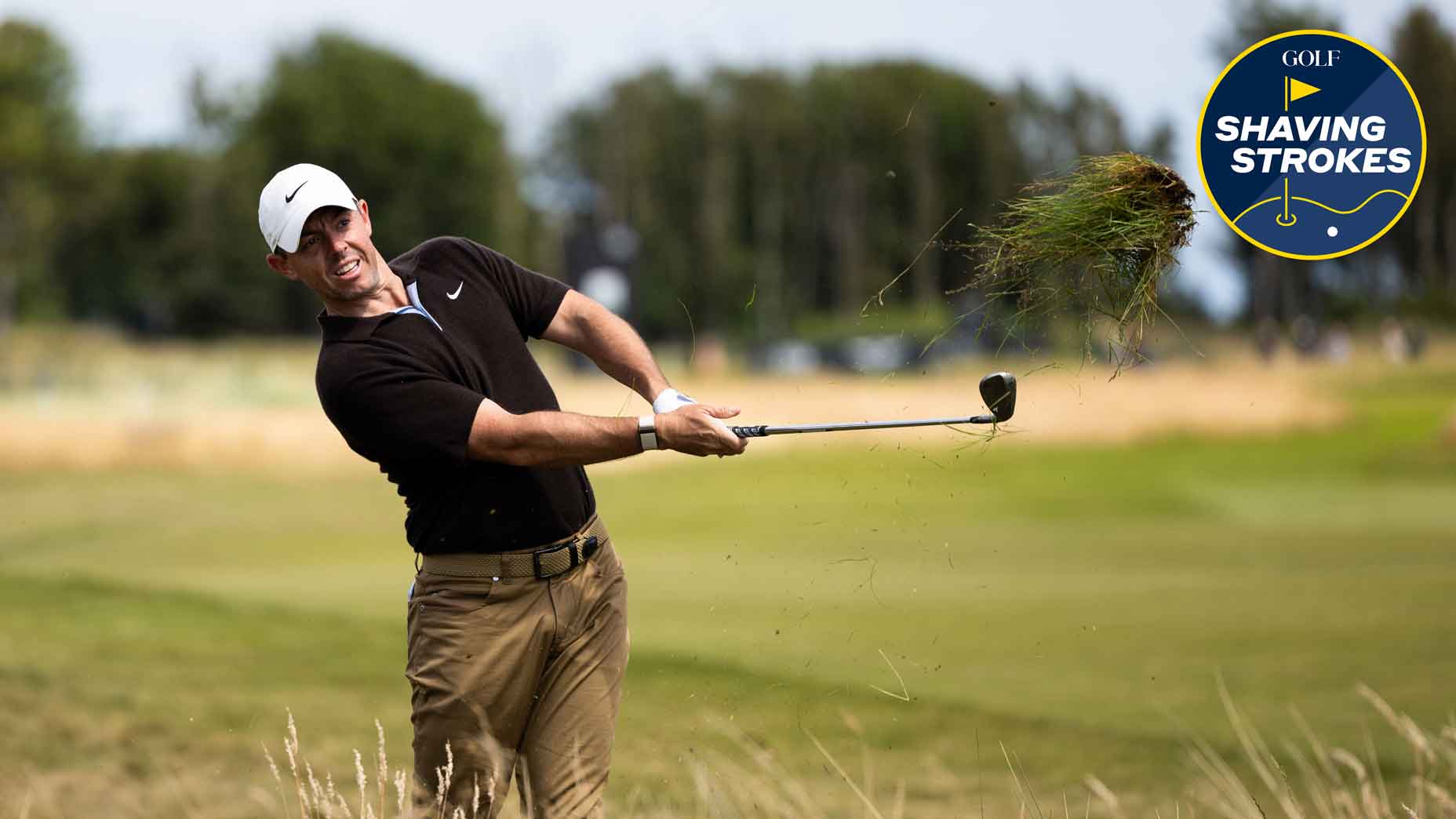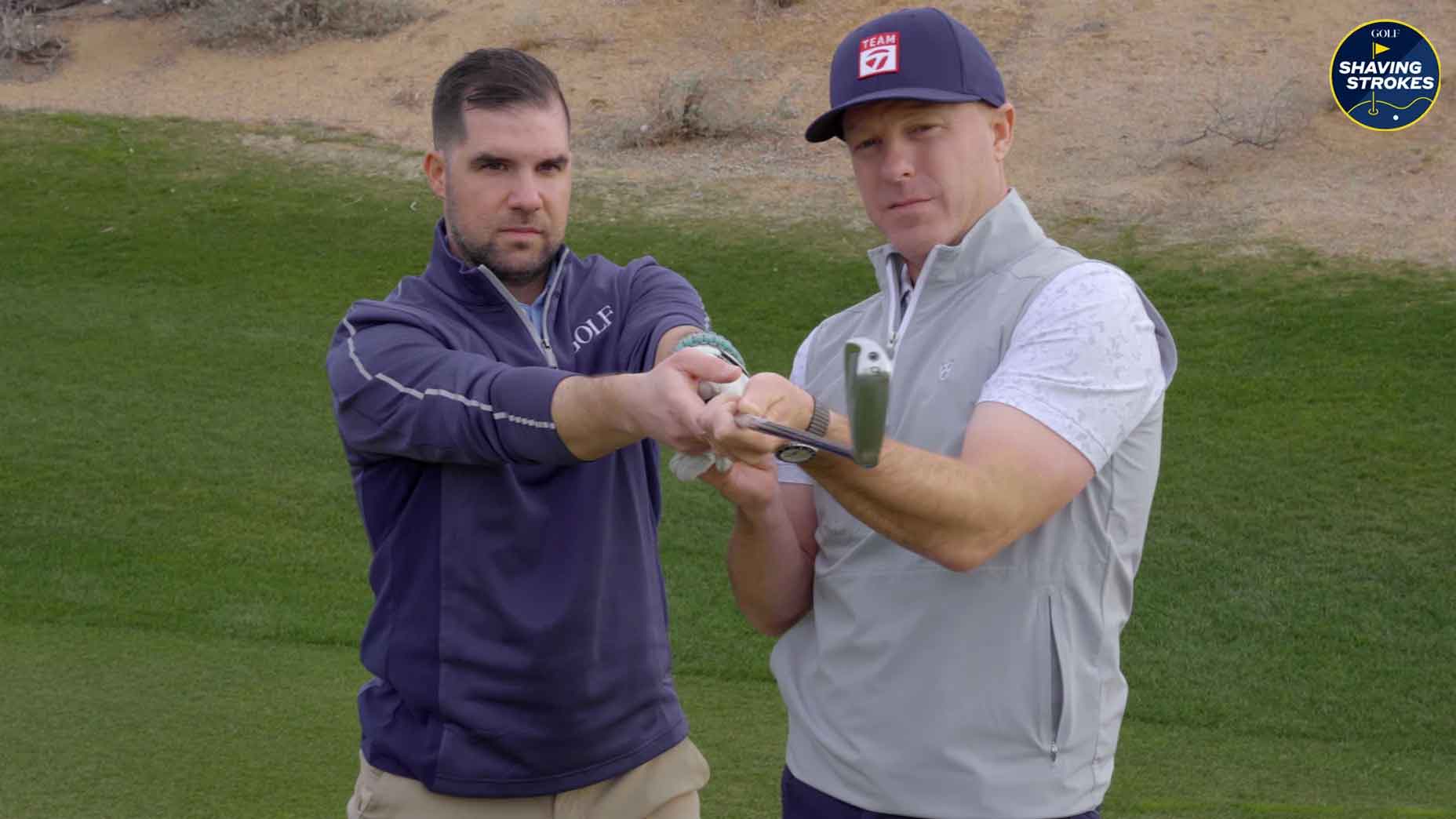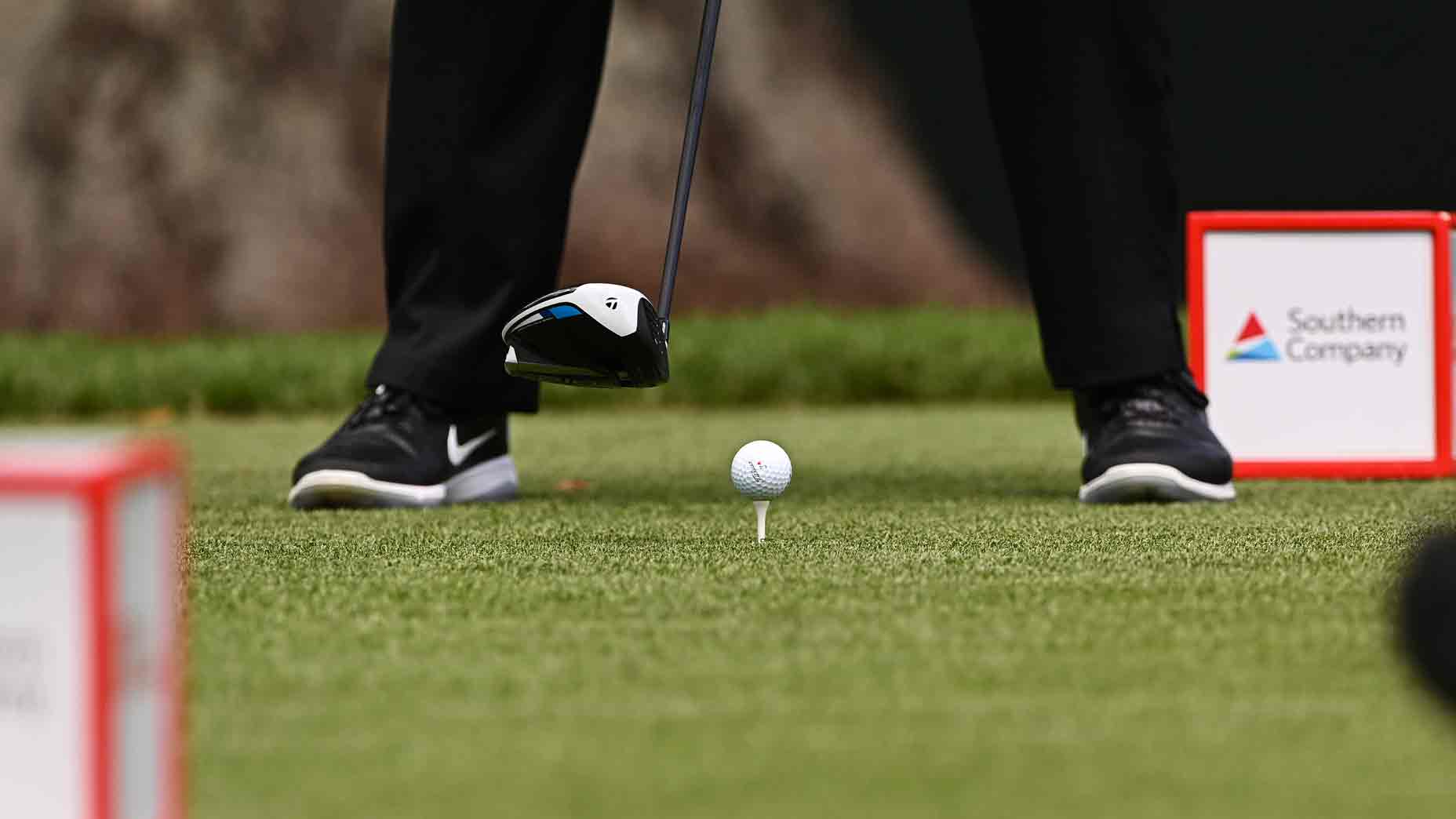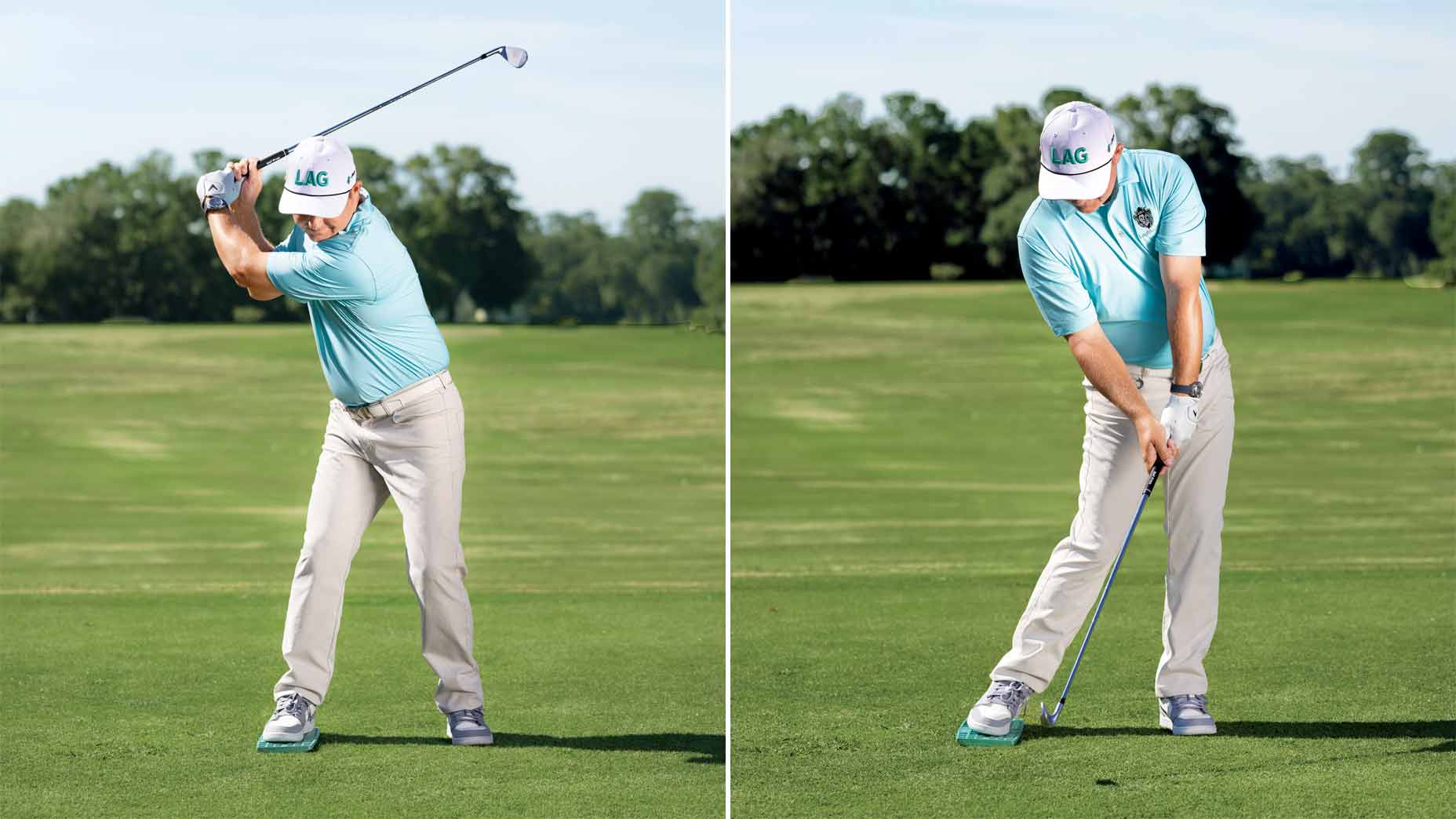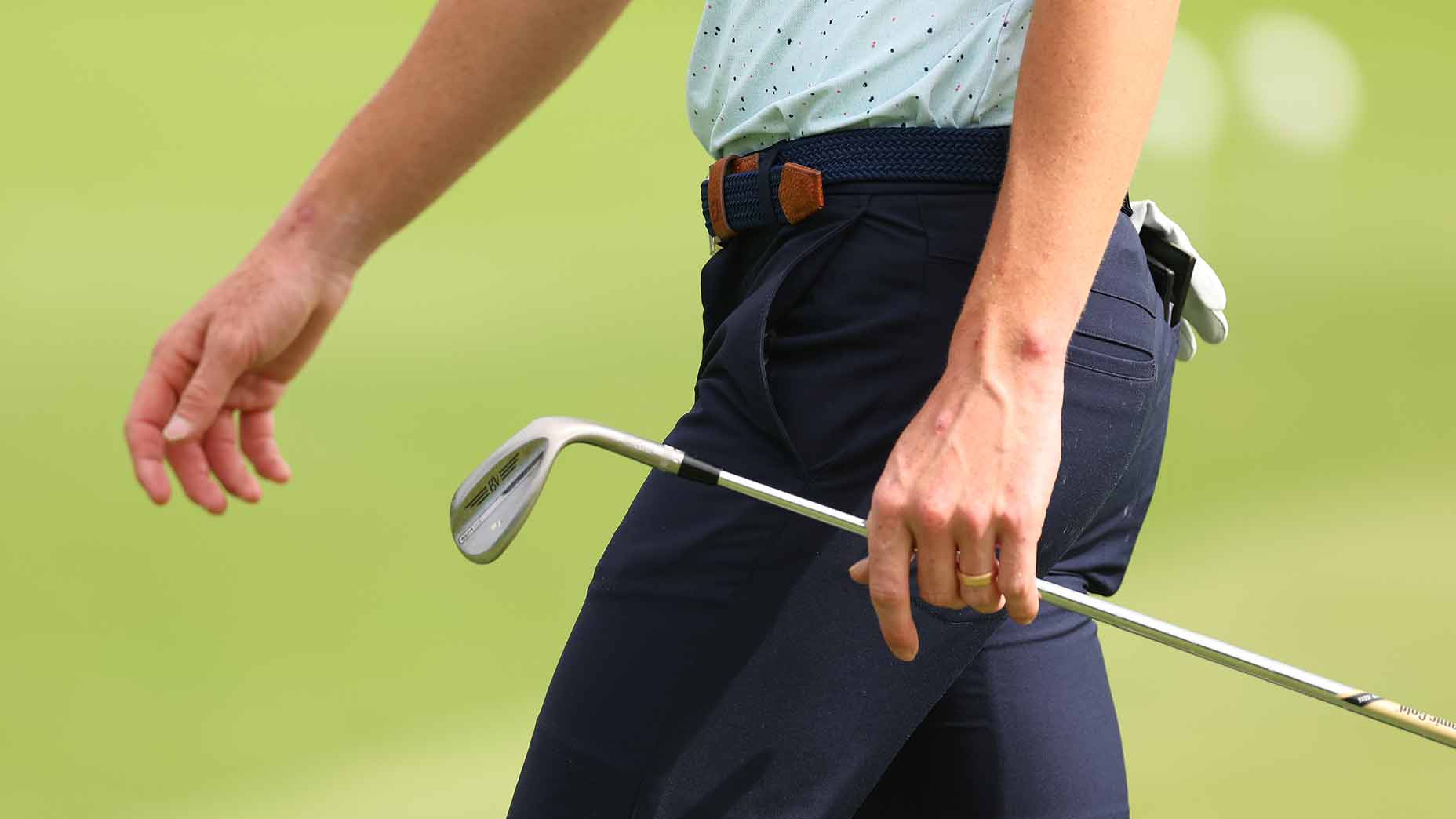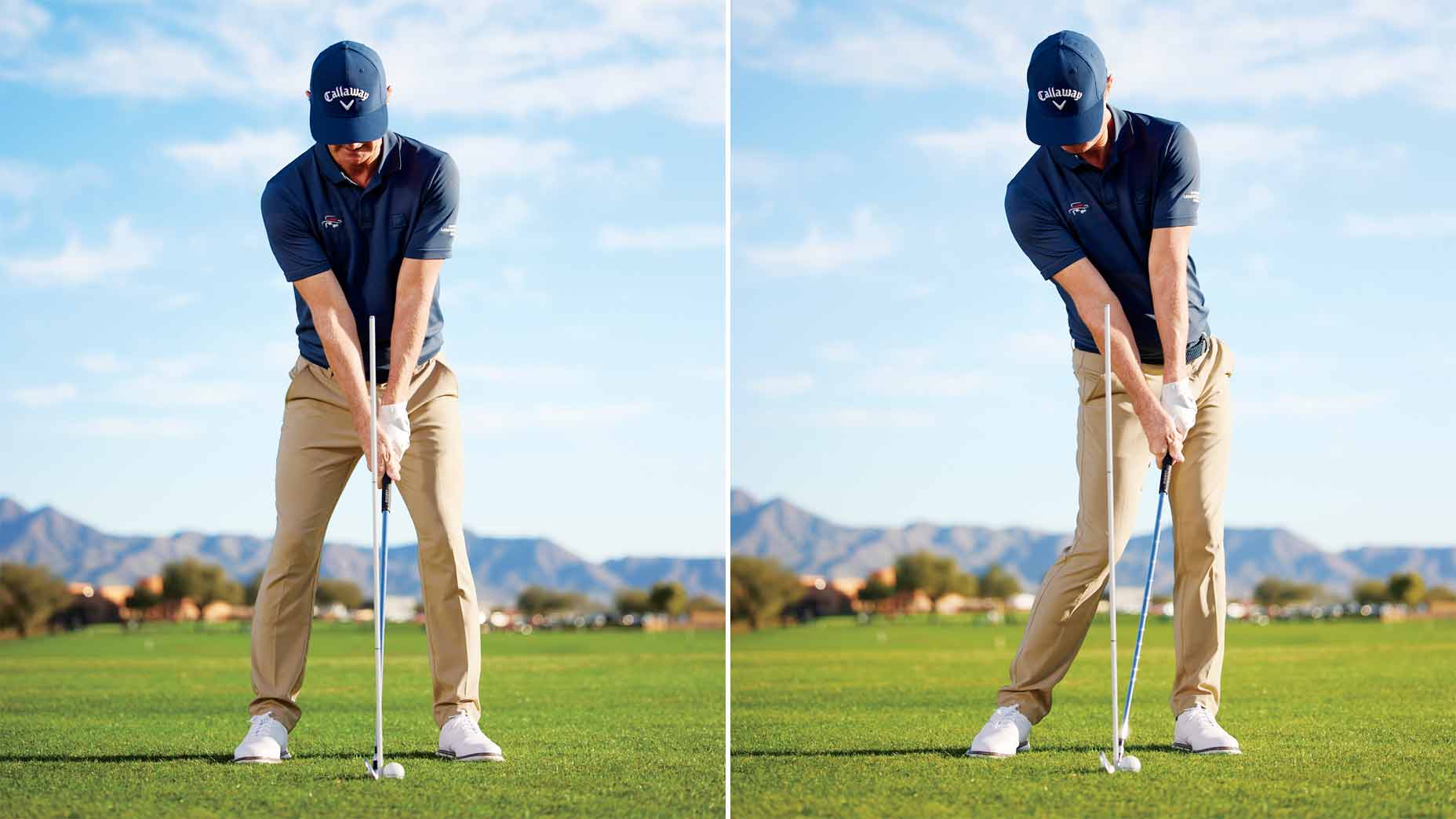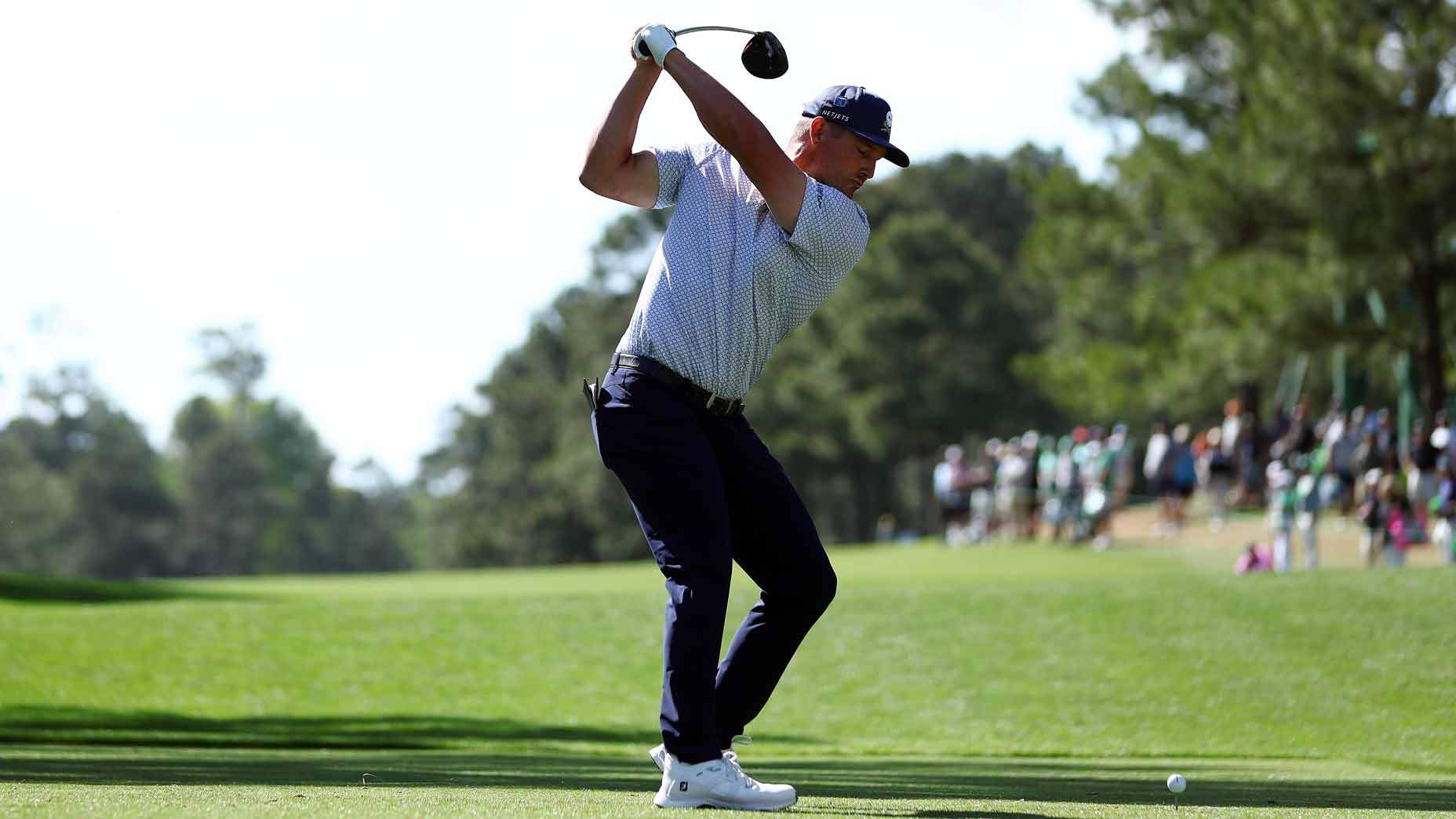Want to take a proper divot with your irons? Try this simple drill

Learning to take a proper divot has numerous benefits.
Getty Images
There are some shots in golf that make you feel like a real player. Hitting a wedge with spin, mastering a flop, executing a stinger when you need it — these are all shots that require practice and precision and make you look really good to your playing partners.
Another good-player characteristic that would fall into this category is taking a proper divot with your irons. All the pros seem to do this flawlessly, but doing it correctly at the recreational level can be elusive. Some players have a naturally shallow, sweepy swing, which makes taking a divot difficult. Others have no problem with divots, but placement is a problem — the divot is either too far ahead of the ball, or too far behind it.
“Taking a divot’s not that great a thing if it’s before you hit the ball,” GOLF Top 100 Teacher Brian Manzella says. So what’s the best way to train yourself to take a pro-level divot? Here’s Manzella’s advice.
How to take a proper divot
The first key to taking a proper divot is getting comfortable with the feeling at impact.
“What I like to do is take a tee, just the stem part of it, and put it about three or four inches ahead of the ball,” Manzella says. “Let’s see if you can hit the ball and the tee. It’s possible to do it without taking a divot, but the odds are, the focus of not just hitting the ball straight up in the air, but hitting the ball and then hitting a little stem of a tee on the ground, the required downward blow to to that is embedded in that request.”
Focusing on this drill also enables you to make some natural changes to your swing and posture.
“Obviously, you can’t reach that tee if you don’t have you hips far enough forward, if you don’t have your torso far enough forward, and if you don’t have your hands far enough forward,” he says.
For players who aren’t able to complete the drill, Manzella says its an indication that one or all of the above needs to be adjusted — hips, torso or hands.
“I would start by introducing those adjustments one at a time,” Manzella says. “Probably body, hips first, chest second, hands last.”
Even if you think you’re a good enough player without taking a divot, Manzella stresses that it’s a useful fundamental to cultivate.
“If you’re hitting the ball first, and then hitting the ground, it wouldn’t really matter if it was a perfect fairway, a ratty fairway, or hardpan,” he says. “If you can hit ball first, you can hit a fairway bunker shot, you can do anything.”
Divot Board
$99.99
View Product
For more tips from Brian Manzella, click here.





